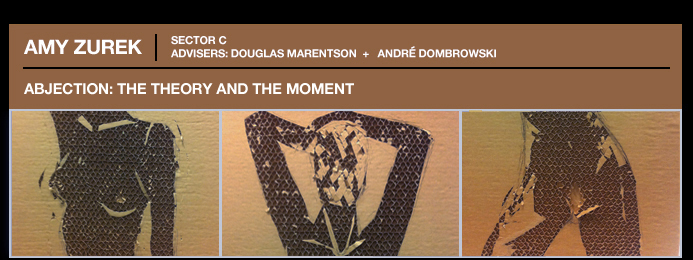
ABJECTION: THE THEORY AND THE MOMENT
When we think of abject art, the aesthetic that comes to mind is one of rebellious filth: dirt, excrement, decaying food, and other taboo substances that repel the viewer. Content that pertains to the marginalization of an individual, such as the physically disgusting corpulence of obesity or the societal rejection of homosexuality, presents a slightly subtler reflection of the concept. The elastic definition we have come to associate with the abject, therefore, is that which is base, lowly, prohibited, marginalized or excluded, that which unnerves us by disrupting our normative conception.
My thesis proposes that there was a decisive window in time when artists and thinkers were particularly intrigued by the concept of abjection. In the sense that works of art can be seen as artifacts or products of the time of their creation, I argue that this window coincides with certain events in the politics and popular culture of the United States. I present the show Abject Art: Repulsion and Desire in American Art at the Whitney Museum as a culmination of this moment as well as substantiating evidence of its prevalence. As case studies, I examine the work of Cindy Sherman and Jenny Saville to expose the ways in which the aesthetic sensibility of the abject movement was applied to two-dimensional image making practices. In my own work, I explore the use of negative space and removal of materials as a means of creating form and toy with the boundary between attraction and repulsion in reference to the female body.
SECTOR C: Art Practice & Technology
ADVISORS: Douglas Martenson (FNAR) | André Dombrowski (ARTH)

 Visual Studies
Visual Studies